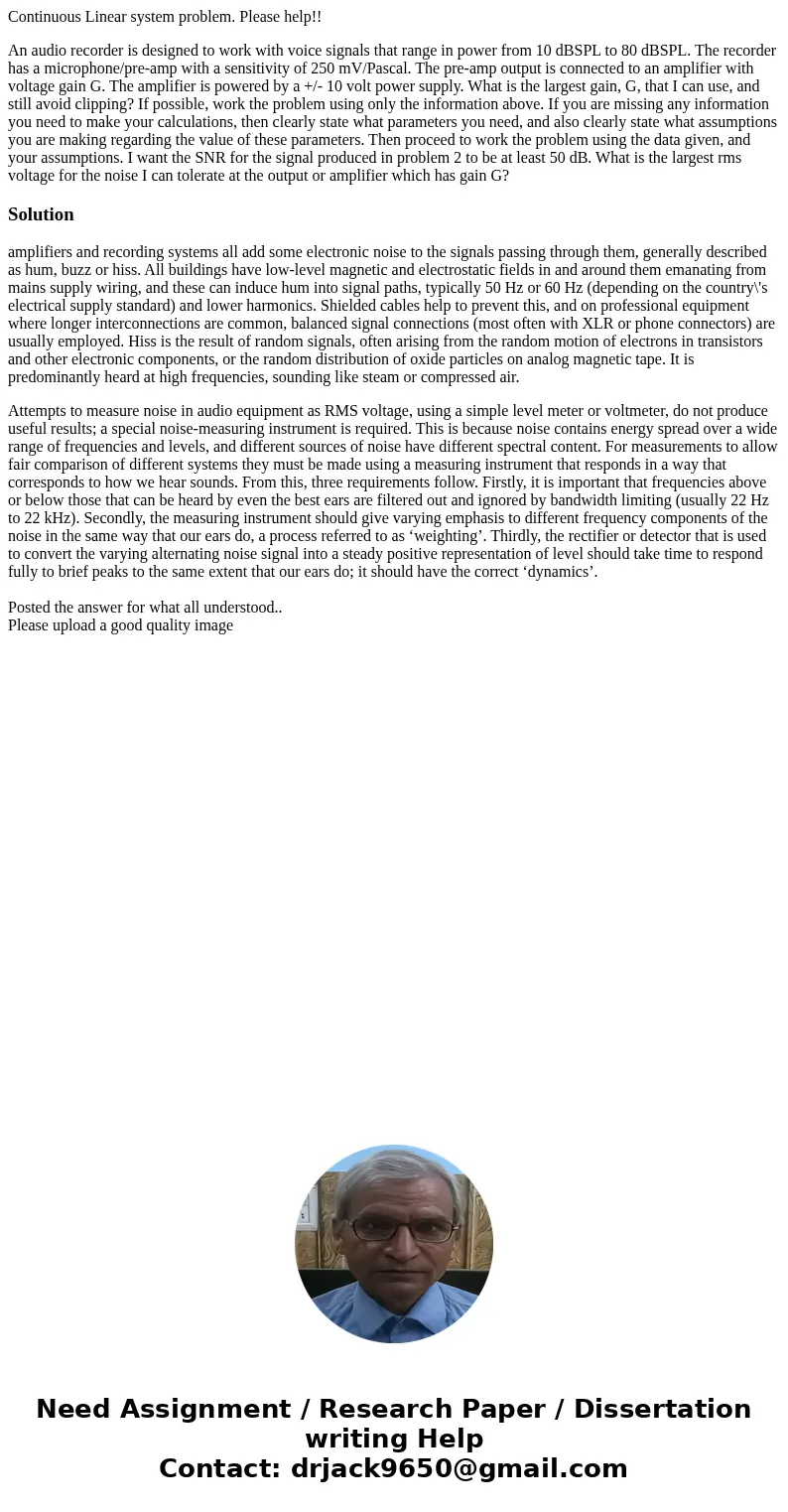Continuous Linear system problem Please help An audio record
Continuous Linear system problem. Please help!!
An audio recorder is designed to work with voice signals that range in power from 10 dBSPL to 80 dBSPL. The recorder has a microphone/pre-amp with a sensitivity of 250 mV/Pascal. The pre-amp output is connected to an amplifier with voltage gain G. The amplifier is powered by a +/- 10 volt power supply. What is the largest gain, G, that I can use, and still avoid clipping? If possible, work the problem using only the information above. If you are missing any information you need to make your calculations, then clearly state what parameters you need, and also clearly state what assumptions you are making regarding the value of these parameters. Then proceed to work the problem using the data given, and your assumptions. I want the SNR for the signal produced in problem 2 to be at least 50 dB. What is the largest rms voltage for the noise I can tolerate at the output or amplifier which has gain G?Solution
amplifiers and recording systems all add some electronic noise to the signals passing through them, generally described as hum, buzz or hiss. All buildings have low-level magnetic and electrostatic fields in and around them emanating from mains supply wiring, and these can induce hum into signal paths, typically 50 Hz or 60 Hz (depending on the country\'s electrical supply standard) and lower harmonics. Shielded cables help to prevent this, and on professional equipment where longer interconnections are common, balanced signal connections (most often with XLR or phone connectors) are usually employed. Hiss is the result of random signals, often arising from the random motion of electrons in transistors and other electronic components, or the random distribution of oxide particles on analog magnetic tape. It is predominantly heard at high frequencies, sounding like steam or compressed air.
Attempts to measure noise in audio equipment as RMS voltage, using a simple level meter or voltmeter, do not produce useful results; a special noise-measuring instrument is required. This is because noise contains energy spread over a wide range of frequencies and levels, and different sources of noise have different spectral content. For measurements to allow fair comparison of different systems they must be made using a measuring instrument that responds in a way that corresponds to how we hear sounds. From this, three requirements follow. Firstly, it is important that frequencies above or below those that can be heard by even the best ears are filtered out and ignored by bandwidth limiting (usually 22 Hz to 22 kHz). Secondly, the measuring instrument should give varying emphasis to different frequency components of the noise in the same way that our ears do, a process referred to as ‘weighting’. Thirdly, the rectifier or detector that is used to convert the varying alternating noise signal into a steady positive representation of level should take time to respond fully to brief peaks to the same extent that our ears do; it should have the correct ‘dynamics’.
Posted the answer for what all understood..
Please upload a good quality image

 Homework Sourse
Homework Sourse